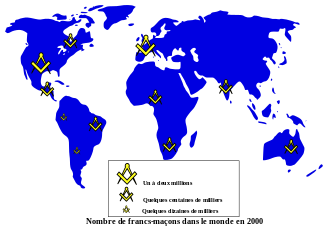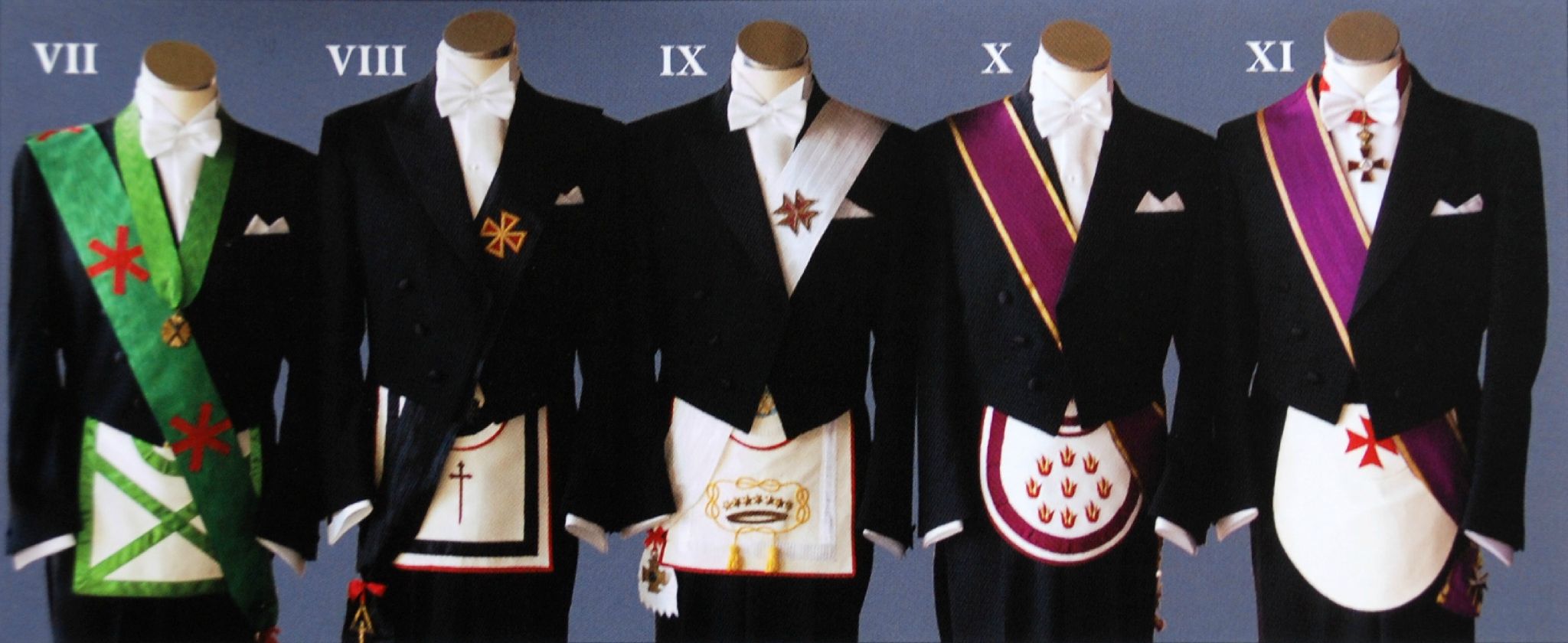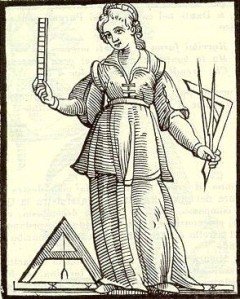Freemasonry
Freemasonry
I have already heard about Freemasons and read some articles about it by preparing my post on the Illuminati.
So, it made me want to dig the subject and understand who they were?

The word Freemasonry designates a set of selective sociability spaces, the recruitment of members of which is done by co-optation and practices initiatory rites referring to a Masonic secret and the art of building.
Formed by very diverse historical and social phenomena, it seems to appear in 1598 in Scotland then in England in the 17th century. It describes itself as an essentially philosophical and philanthropic association, as a system of morality illustrated by symbols and as an initiatory order.
Freemasonry refers to the ancient duties of the English operative masonry formed by the builders' corporations. It draws its sources from a set of founding texts written between the fourteenth and eighteenth centuries.
It provides esoteric instruction (set of secret teachings reserved for initiates.) Using symbols and rituals. It encourages its members to work for the progress of humanity.
Its vocation is universal, its practices and its modes of organization vary according to the countries and the times. It has been structured over the centuries around a large number of rites and traditions, which has led to the creation of a multitude of obediences (grouping of Masonic lodges, in a federative form and which can take the name Grand Lodge or Grand Orient, which do not all recognize each other.
It has always been the subject of many criticisms and denunciations, with very different motives depending on the time and the country.
Lodges, Obediences and Masonic Rites
Lodges
Masonic lodges have the power to initiate new members. One lodge has about forty active Freemasons who meet on average twice a month.
A box is framed by the five lights: the venerable master-in-chair, the first supervisor, the second supervisor, the speaker and the secretary. There are also other officers who occupy specific functions. They are usually elected every year by the lodge masters. According to the lodges, the functions are renewable two or three years after the election.
Each lodge remains free from the choice of its president, called the venerable, whom she elects each year, subjects that her members wish to study and external actions, charitable and / or societal, that she wishes to lead.
The Masonic lodges are grouped most often in masonic obediences generally called large lodges. The lodges pool their strengths by getting closer to each other, particularly with regard to material, financial and ritual matters.
The grouping of lodges into Masonic obediences, which first appeared in England in June 1717, marked a turning point in the early days of Freemasonry, in fact, this grouping led to the loss of freedom of each of the lodges since they agreed to comply with the special rules of their federation. However, the lodges usually remain jealous of their margin of freedom and it is not uncommon, within the same Masonic obedience, to find lodges whose work programs, actions and sociological compositions are very different from each other others.
A Masonic lodge is a local structure typically gathering a few dozen Freemasons.
The oldest known Masonic lodge, which can be clearly identified as structurally distinct from the local Masonry Operational Corporation, was Mary's Chapel, founded in 1599 under William the Clear, in Edinburgh, Scotland.
British Masonic lodges at the end of the seventeenth century are made up mainly of modest city dwellers, artisans and small traders. They have almost no connection with the job of mason and are very similar to friendly societies like those of the Franc gardeners or Odd Fellows.
Their main purpose is beneficence and mutual help at a time when there is no public social protection. They help their sick or unemployed members, pay for their funeral expenses and assist their widows or orphans if necessary.
The big lodges
A large lodge is a grouping of several lodges.
On June 24, 1717, Saint John's Day, four London lodges: "The Goose and the Grill", "The Goblet and the Grapes", "The Apple Tree" and "The Crown" met in the tavern at The Goose and Gridiron and formed the first grand lodge, the Grand Lodge of London and Westminster.
Then Freemasonry spread in twenty years throughout Europe and gradually throughout the European colonies, in America first, then in Australia, Africa and Asia. Lodges were founded in Russia, Belgium, Spain, Italy and Germany.
The obediences
Although there are a large number of Masonic obediences with their own practices and conceptions, they can be divided into two main branches: the liberal and the traditional.
The traditional branch
It is the most widespread branch in the world. It mainly includes the obediences that are called regular, which refer to the ancient customs, codified over time in different lists of rules or landmarks. Its main characteristic is that it does not deal with political or religious subjects, and therefore with questions relating to the construction of society.
The liberal branch
It is called adogmatic because it does not impose any particular belief and accepts atheists. It continues the tradition of openness and tolerance of the Grand Lodge of England known as the Moderns before 1813.
She refuses to recognize those traditional big boxes that practice religious segregation. The work of its lodges is spiritual, social and even political for the most liberal obediences. The Grand Orient of France, born in 1773 and descendant of the first French lodges of 1728 is today the oldest obedience of this branch.
Liberal masonry is composed of masculine, mixed and feminine obediences.

Masonic rites
A Masonic rite is a set of rituals and Masonic practices.
In the 17th century, Masonic rituals were not written and were never printed. They are no longer known today because of a very small number of handwritten notes that have escaped the rule and time, as well as by some old disclosures. The study of these documents shows that they evolved rather considerably over time.
In the eighteenth century, after the reorganization of the practices following the founding of the first large lodges, the Ancients and the Moderns practice again quite similar rituals, which are distinguished by a rather small number of remarkable points, such as the place of certain symbolic elements, the way of passing passwords, or a more or less important reference to the Christian religion.
However, by the 1740s, new divergences appeared, alongside traditional rituals in the form of several hundred rituals of additional degrees called high ranks many of which were only variants of each other.
This multiplication of Masonic rituals leads to various initiatives aimed at standardizing practices and bringing them together into coherent and stable groups: Masonic rites.
The best known throughout the world are the Rite Emulation, the old and accepted Scottish Rite, the York Rite and the French Rite. A little more than a dozen others, of very different age and notoriety, are practiced throughout the world.
Practice
The practices vary in their details according to the rite followed by the lodge. However, there are quite a few constants:
Recruitment
Everyone is free to apply. The websites of certain obediences specify the steps to follow. If you know the address of a particular lodge, you can also write to it. But in fact, there are few spontaneous candidacies, indeed, most of the applicants know a member of the lodge who offered them to instruct them on the masonic process and to sponsor their candidacy.
However the admission process is the same for all and takes time.
http://www.ugle.org.uk/freemasons-hall/
You must be of legal age and have a clean criminal record. Once the application is submitted, the applicant will usually have an interview with the venerable of the lodge and, if there is no negative vote, investigated by various members of the lodge to assess whether his approach is honest, sincere, matured and motivated and if she addresses the lodge most likely to respond to her spiritual quest.
According to their landmarks, certain obediences of the traditional branch require that the candidate be a Christian, others only ask him to affirm his faith in God. In liberal obediences, no particular belief is required.
At the end of the procedure, and in most of the rites in use in continental Europe, after a hearing under the banner before the assembled box, it decides in all sovereignty to initiate or not a new member. In case of refusal, the sponsor help the rejected candidate to analyze this refusal.
Unless there is a serious reason, a new application may be introduced after a period of maturation. The voting of the members of the lodge is traditionally done with the help of white and black balls.
A Freemason may at any time stop participating in the activities while continuing to pay his membership fee or resign. A Freemason who has resigned on a regular basis may later apply for reinstatement. Masons say that, unlike sects, you can enter and exit just as easily.
Once the candidate has been accepted by the lodge, he is initiated during a special ceremony. This may be slightly different depending on the rites, but its unfolding always consists of a series of tests that symbolically lead the candidate from a state of darkness, alienation and confinement to a state of enlightenment openness and freedom. The tools of the rank, as well as the first signs of recognition, are then taught to him and the candidate becomes an apprentice.
In this initiatory society, the brothers and sisters are first apprentices before becoming companions then to be raised to the master's degree. During the whole time the new member will be an apprentice, he will not be allowed to speak in the lodge: he will only have to listen, in order to soak up the spirit of the outfits.
Outfits

Freemasons meet in temples where the meetings, called outfits, take place according to the ritual adopted by the workshop, the rite or the obedience. The masons wear an apron and white gloves, the officers are provided with symbolic objects (mallet, sword ...). The outfits are presided over by the venerable master in the pulpit.
Some outfits are devoted to special events: opening of the box at the beginning of the year, installation of the college of officers, initiation of the layman, passage to the rank of journeyman, elevation to the rank of master, ritual banquet, winter solstice and summer, end of year elections, ...
Values
Masonry claims a number of values. Its members thus feel bound by ideals, both ethical and metaphysical.
The spirit of tolerance is one of the values displayed by Freemasonry.
Spirituality being omnipresent as much in the symbolism as in the philosophical approach on which the whole of Freemasonry rests, the vast majority of the lodges demand the belief in a supreme Being or Great Architect of the Universe.
Since the early nineteenth century, certain obediences have additional religious requirements, such as theism or belief in the immortality of the soul. Freemasonry, which predominates in Scandinavia, only accepts Christians.
In branches derived from so-called liberal Freemasonry, this belief in a supreme Being is optional and agnostics or atheists are accepted without problem, which has become the main cause of disagreements between traditional and liberal obediences.
The women

Nowadays, in most European countries, women can join mixed or exclusively female obediences, the oldest being the International Joint Masonic Order "Human Rights", founded in 1901 and Order of Women Freemasons, founded in 1908 .
Liberal obediences generally recognize mixed and female lodges. Some recognize women's lodges and accept the presence of women in their boxes, but do not initiate them.
Freemasonry in the traditional branch, on the other hand, does not formally recognize any group accepting women, although in many countries informal relations or occasional co-operation may exist. For example, the United Grand Lodge of England has since 1999 considered that certain women's obediences, respecting a strict non-marriage, must be seen as part of Freemasonry.
In North America, it is more common that women do not join Freemasonry directly but through associations with their own traditions and rituals, such as the Order of the Eastern Star or Daughters of the Nile, which work together. with the traditional Masonic lodges.
Symbolic
Freemasonry borrows many of its symbols from the art of building practiced by the builders of cathedrals in the Middle Ages, which it considers its predecessors and from which it has inherited the very notion of a lodge, the place where the workers meet.
Freemasons say they are speculative compared to fellow-masons they describe as operative.
The square and the compass, the mallet and the chisel, the level and the plumb line, the ruler and the lever, the trowel and many other symbols belong to this tradition.
The meaning of the letter G which appears in the Masonic symbol often located between a square and a compass or in the center of a five-pointed star is not precise and gives rise to several interpretations.
For the Anglo-Saxons, of deistic tradition, the letter G is the initial of God and its interpretation is unambiguous. For the French, the more modern rituals associate G with Geometry, Generation, Gravitation, Engineering and Gnosis.
These symbols are offered for reflection by the Freemason and take on a different meaning from their agreed meaning. Geometry, the art of line and construction, strongly permeates the Masonic symbolism whose tools: plumb line, square, compass ... refer to the measure and the craft of builder, sources of inspiration of the modern Freemasonry . The term generation refers to the creative capacity that every man possesses in him and on all levels whether intellectual, physical or psychic. Gravitation refers to the principle of universal gravitation discovered and theorized by Newton in the 18th century.
The five interpretations of the letter G are, for the Freemason, as many ways to explore, not only from an intellectual and objective point of view but following a spiritual and subjective method.
Beyond words, the five meanings of the letter G refer to the place of man in creation, as "the man of Vitruvius" of Leonardo da Vinci.
I hope I enlightened you a little on this relatively complex subject, I tried to be clearest and simple so that everyone understands the world of Freemasons. I did not know how to talk about everything else or the article was going to be too long and heavy to read but if you are interested, I invite you to do your own research, it is a very vast and very interesting subject.
hi @lndesta120282, I have also read about Freemasonry from wikipedia https://en.wikipedia.org/wiki/Freemasonry but it seems always difficult to understand but after reading your post I am now able to understand and I have also watched some of the movies related to Freemasonry,you can check this link https://freemason-wa.org/2016/07/20/33-historical-films-every-freemason-see/ these are very good collection of movies.I must say this post is very interesting and love to read it.Thank you to share with us.You are the best @lndesta120282,upvoted and resteemed.
great to share
.symbol of great thing..
keep it up with reserch..
upvoted..
always i follow you..
Every try knocking to success. Hope you will be touch your destinetion. Please don't stop your reserch. What you made its not bad. I think its a good symbols.
I'm always with you.
good post
nice post sir,i love your post wish I had enough sp I would have given you 100%
should we do our secret handshake
great post..just outstanding...you may like my recent on the Catskill Mt. region of NY....and SILVER! UPVOTED>
Great post! This is one of the most informative and well-written pieces I've read on this topic! More, please!!
great post! i always got amazed by this subject, thank you for sharing such great content :)